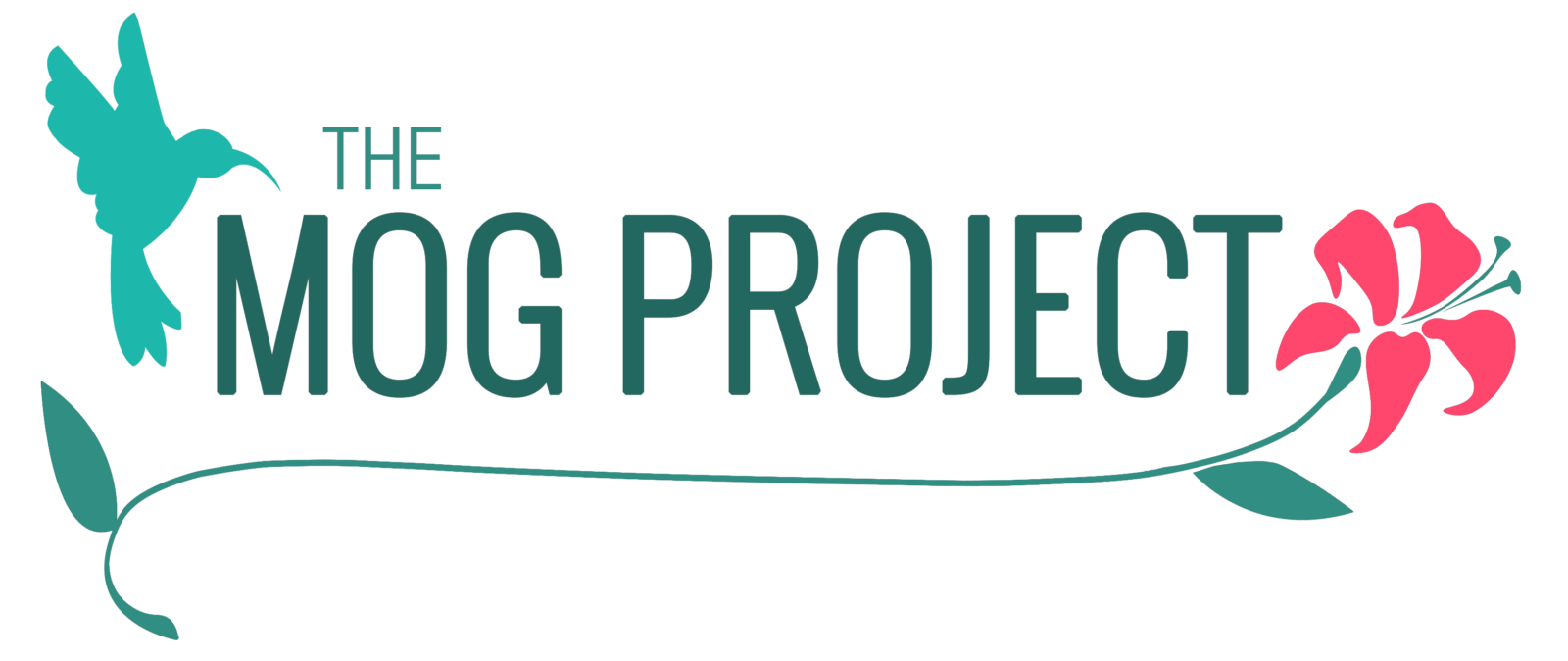The Mayo Clinic Neuroimmunology Laboratory
The Mayo Clinic’s Neuroimmunology Laboratory has some of the leading experts in MOGAD and is a go-to place for patients to get some of the best care to manage their disease. They developed one of the most accurate and widely used MOG Antibody blood tests and are continually moving research forward in this rare neuroimmune disease.
Recent Research at The Mayo Clinic
Dr. Sean Pittock, Dr. John Chen, and Dr. Eoin Flanagan have provided a list of Mayo Clinic publications from 2018 to the present including commentary in their words on the research. These articles are provided with permission from The Mayo Clinic Neuroimmunology Laboratory.
The understanding of MOGAD and knowledge of its clinical and imaging aspects and potentially beneficial treatments has rapidly expanded in recent years. This review article was undertaken to provide an update on how MOGAD should be diagnosed and to highlight the range of clinical and MRI features through illustrative tables and figures. We highlight the pitfall of low positive MOG-IgG results which can be encountered with other diseases and outline red flags that suggest an alternative diagnosis. Finally, we review the current acute and chronic management of MOGAD and emphasize the importance of upcoming prospective randomized placebo-controlled clinical trials of attack-prevention treatments in MOGAD which will guide our therapeutic approach into the future.
In this international collaborative retrospective study of IVIG for adult patients with MOG antibody-associated disease (MOGAD), we found maintenance IVIG was associated with a significant reduction in relapses. More frequent relapses were seen in patients receiving lower or less frequent dosing of IVIG. This dose response to IVIG helps support it is effective, but the ideal dose varies depending on the individual.
This study looked at OCT during acute optic neuritis and found that MOGAD optic neuritis had more thickening of the peripapillary retinal nerve fiber layer thickness (pRNFL) than multiple sclerosis optic neuritis. OCT can help differentiate these causes of optic neuritis before the antibody testing returns and can also be used to help confirm optic neuritis attacks for clinical practice and future clinical trials.
This study found that the frequency of chiasmal involvement with optic neuritis was similar between AQP4+NMOSD (20%) and MOGAD (16%). However, chiasmal involvement in MOGAD was more likely to be from a longitudinally extensive lesion affecting the entire optic nerve and chiasm while AQP4+NMOSD more commonly had isolated chiasmal involvement.
This study looked at a series of MRI’s over time in patients with MOGAD, AQP4+NMOSD, and MS. The MRI T2 lesions in MOGAD resolve completely more often than in AQP4+NMOSD and MS. This has implications for diagnosis, monitoring disease activity, and clinical trial design, while also providing insight into pathogenesis of CNS demyelinating diseases.
This study looked at the clinical and radiologic involvement of the brainstem and/or cerebellar involvement in MOGAD and found that they were common, but more likely to occur as part of a multifocal central nervous system attack rather than in isolation.
This study compared the frequency of attacks requiring ventilatory support in MOGAD vs AQP4+NMOSD. Attacks requiring ventilatory support were similarly rare in patients with MOGAD (2.9%) and AQP4+NMOSD (2.2%). AQP4+NMOSD patients were on the ventilatory longer than MOGAD patients. All patients with MOGAD recovered, but 2 of 11 (18%) patients with AQP4-NMOSD died of the attack.
This study looked at 203 lumbar punctures that were done in MOGAD patients and found that elevated white blood cells was seen less commonly with isolated optic neuritis (23%), compared to myelitis, brain/brainstem attacks, or combinations thereof (>70%). Abnormal CSF oligoclonal bands ranged from 1% (optic neuritis) to 18% (brain/brainstem attacks).
This study found that the initial spinal cord MRI was negative in 7/73 (10%) MOGAD patients, despite severe acute disability and myelitis symptoms/signs (paraparesis, neurogenic bladder, sensory level, Lhermitte’s phenomenon). Myelitis lesions became visible in follow-up MRI in three patients. A negative spinal cord MRI should not dissuade from MOG-IgG testing in patients with acute/subacute myelitis.
This study found that MOGAD was not strongly associated with other systemic autoimmune diseases, unlike AQP4+NMOSD, which has a stronger association with diseases such as systemic lupus erythematous.
In this study, we assessed Mayo Clinic patients who underwent MOG IgG testing over the course of 2 years (2018 to 2019) and assessed the positive predictive value, false-positive rate and specificity. We found the antibody was highly specific (97.8%) but false positives occurred in up to a quarter of patients. The false positives were more frequent with low titers (of 1:20-1:40) and when the antibody was ordered in very low probability situations. The major message is that MOG IgG testing should be reserved for those with suspicious clinical and radiologic syndromes and caution is advised when low titer results are found in patients with atypical features.
https://jamanetwork.com/journals/jamaneurology/fullarticle/2770029
We studied the long-term clinical outcomes in 29 patients with myelin oligodendrocyte glycoprotein (MOG) antibody associated disorders (MOGAD with follow up of 9 years or more. The median follow-up duration was 14 years (range, 9-31). The median EDSS at last follow-up was 2 (range, 0-10) which is consistent with mild disability. Patients did develop additional mild disability with subsequent attacks, supporting the rationale for studies of attack prevention treatments in MOGAD. No patients had a secondary progressive disease course. In summary, we found most MOGAD patients had a favorable long-term outcome without secondary progression despite frequent relapses. This differs from the outcome reported with MS and aquaporin-4-IgG neuromyelitis optica spectrum disorders (NMOSD).
https://www.sciencedirect.com/science/article/pii/S0002939420303652
This study looked at the population-based etiologies of optic neuritis using the Rochester Epidemiology Project. 5% of optic neuritis was caused by MOGAD in the predominantly white population of Olmsted County, MN. Other causes of optic neuritis were multiple sclerosis in 57%, idiopathic in 29%, and AQP4-IgG positive NMOSD in 3%.
https://www.sciencedirect.com/science/article/pii/S0022510X20304251?via%3Dihub
This study reports two patients with multiple relapses and poor outcome with MOGAD and highlights some of the MRI findings of brain thinning.
https://jamanetwork.com/journals/jamaneurology/article-abstract/2769020
The 2015 diagnostic criteria for NMOSD was created before the appreciation of MOGAD as a distinct disorder. This study looked at 170 MOGAD patients seen at the Mayo Clinic and found that only 43 (25%) fulfilled the 2015 seronegative NMOSD criteria. This highlights that the NMOSD criteria fails to capture the majority of MOGAD patients and supports specific molecular biomarker-associated diagnostic criteria for inflammatory central nervous system disorders.
In this study, Mayo Clinic investigators showed that organ specific autoimmunity is much less common with MOG-IgG versus AQP4-IgG positive NMOSD and highlights further the difference between these disorders.
https://www.ncbi.nlm.nih.gov/pmc/articles/PMC7181560/
This study is the largest human pathological study of MOGAD that was done as a collaboration between Mayo Clinic and The University of Vienna. We defined the histopathology of 22 biopsies and 2 autopsies from patients with myelin oligodendrocyte glycoprotein (MOG) antibody associated disorders (MOGAD). MOGAD pathology is dominated by coexistence of both perivenous and confluent white matter demyelination, with an over-representation of intracortical demyelinated lesions compared to typical MS. Radially expanding confluent slowly expanding smoldering lesions in the white matter as seen in MS, are not present. A CD4+ T-cell dominated inflammatory reaction with granulocytic infiltration predominates. Complement deposition is present in all active white matter lesions, but a preferential loss of MOG is not observed. AQP4 is preserved. MOGAD is pathologically distinguished from AQP4-IgG seropositive NMOSD, but shares some overlapping features with MS. The results may have implications for future development of treatments in MOGAD.
In this study Mayo Clinic investigators showed that in up to 10% of patients with MOG-IgG myelitis, the initial MRI can be negative. Thus, a negative MRI spine should not dissuade from MOG-IgG testing in a patient with acute/subacute myelitis.
https://www.ncbi.nlm.nih.gov/pmc/articles/PMC7051197/
In this multicenter study of MOG-IgG cell-based assays (CBAs) involving Mayo Clinic and other international investigators, live MOG-IgG CBAs showed excellent agreement for high positive and negative samples at 3 international testing centers. Low positive samples were more frequently discordant than in a similar comparison of aquaporin-4 antibody assays. Further research is needed to improve international standardization for clinical care.
https://jamanetwork.com/journals/jamaneurology/article-abstract/2753236
This study evaluated the frequency of having both MOG-IgG and AQP4-IgG positive in the same patient. Among 15,598 patients tested for both MOG-IgG and AQP4-IgG, only 10 patients (0.06%) were positive for both. When both were positive, the AQP4-IgG titers were typically much higher than the MOG-IgG and the clinical phenotype resembled AQP4-IgG positive NMOSD more than MOGAD. This study demonstrates that co-positivity of both AQP4-IgG and MOG-IgG is quite rare.
https://n.neurology.org/content/94/2/85.abstract
This study retrospectively reviewed 173 MOGAD patients and found that 18 (10%) had symptoms of area postrema syndrome (intractable nausea, vomiting, and/or hiccups) that were typically in conjunction with other neurologic symptoms. Only 1 (0.6%) MOGAD patient had isolated symptoms of area postrema syndrome, which is much less common than seen in AQP4-IgG positive NMOSD (9.4%–14.5%).
https://jamanetwork.com/journals/jamaneurology/fullarticle/2762455
In this study, Mayo Clinic investigators report two patients with MOG-IgG antibody associated disorder who had unilateral hemi-encephalitis, a recently recognize syndrome associated with this antibody.
MOGAD often causes optic neuritis with perineural enhancement (inflammation of the optic nerve sheath and peribulbar fat). This study reported 2 MOGAD patients that had optic perineuritis (inflammation of the optic nerve sheath) with sparing of the optic nerve. Because MOGAD has a propensity to involve the optic nerve sheath, it is possible that many previous cases of “idiopathic” optic perineuritis may be explained by MOGAD.
https://www.ncbi.nlm.nih.gov/pmc/articles/PMC6511109/
In this international collaborative study including Mayo Clinic investigators this study showed that the live cell based MOG-IgG assay used at Mayo Clinic and Oxford was superior to the fixed cell based assay. An accompanying editorial highlighted the live-cell based assay, used at Mayo Clinic as being the gold standard for detecting MOG-IgG.
https://www.ncbi.nlm.nih.gov/pmc/articles/PMC6440233/
In this observational study of 54 patients with MOG-IgG myelitis, we showed it may mimic viral/post viral acute flaccid myelitis. Longitudinally extensive T2-hyperintense lesions are typical, but most patients have more than 1 lesion, and an H-shaped axial T2 pattern confined to gray matter and lack of enhancement are discriminating features from aquaporin-4–IgG and MS myelitis. Myelitis attacks are more severe than MS but recover better than AQP4-IgG positive neuromyelitis optica spectrum disorder. Recognition of the clinical and radiologic characteristics of MOG-IgG myelitis and its discriminators from other etiologies will help clinicians identify patients with myelitis in whom MOG-IgG should be tested.
https://n.neurology.org/content/93/4/e414.long
In this study, Mayo Clinic investigators showed that the availability of MOG-IgG and Aquaporin-4-IgG allowed 12-14% of cases of transverse myelitis previously labelled idiopathic to be given a specific diagnosis. This highlighted the need to incorporate these biomarkers into future transverse myelitis diagnostic criteria.
https://www.ncbi.nlm.nih.gov/pmc/articles/PMC6902071/
In this collaborative study between Mayo Clinic Investigators and Sri Lanka, MOG-IgG was found in 17% of patients with inflammatory demyelinating diseases of the CNS and 3.5 times more common than AQP4-IgG.
https://www.sciencedirect.com/science/article/pii/S000293941830401X
This is one of the largest published cohorts of patients with MOG-IgG associated disorder (MOGAD) optic neuritis. The study showed that MOGAD optic neuritis typically presents with severe vision loss, but recovery is much better than AQP4-IgG positive neuromyelitis optica spectrum disorder (NMOSD) optic neuritis. Features of MOGAD optic neuritis are optic disc edema at onset (up to 86%), bilateral (50%), recurrent (50%), and perineural enhancement on MRI (50%).
- Laboratory findingb: serum positive for MOG-IgG by cell-based assayc
- Clinical findings: any of the following presentations:
- ADEM
- Optic neuritis, including CRION
- Transverse myelitis (ie, LETM or STM)
- Brain or brainstem syndrome compatible with demyelination
- Any combination of the above
- Exclusion of alternative diagnosis
Abbreviations: ADEM, acute demyelinating encephalomyelitis; CRION, chronic relapsing inflammatory optic neuropathy; LETM, longitudinally extensive transverse myelitis; STM, short-segment transverse myelitis.
a Must meet all 3 criteria.
b Transient seropositivity favors lower likelihood of relapse.
c In absence of serum, positivity in cerebrospinal fluid would allow fulfillment of criteria 1.
https://www.sciencedirect.com/science/article/pii/S0161642018302409
This study looked at a large cohort patients with recurrent optic neuritis and found that 13% were caused by MOGAD, 19% were caused by AQP4-IgG NMOSD, 19% were caused by multiple sclerosis, and 49% were “double negative” (cause is unknown). MOGAD patients had frequent relapses, but retained good vision compared to AQP4-IgG NMOSD.
https://jamanetwork.com/journals/jamaophthalmology/article-abstract/2673280
This study evaluated serum from 177 participants from the Optic Neuritis Treatment Trial that was completed in 1991 and found 3 (1.7%) were positive for MOG-IgG and no patients were positive for AQP4-IgG. This low percentage of positivity was likely due to the inclusion criteria of the trial, which excluded patients with prior optic neuritis and bilateral optic neuritis. Two of the three MOGAD patients had a relapse of optic neuritis in the 15 year follow-up period. All 3 retained good visual acuity.
The following are review articles on MOGAD, which discuss how MOGAD differs from other demyelinating conditions, such as neuromyelitis optica spectrum disorder:
Gospe, Sidney M., John J. Chen, and M. Tariq Bhatti. “Neuromyelitis optica spectrum disorder and myelin oligodendrocyte glycoprotein associated disorder-optic neuritis: a comprehensive review of diagnosis and treatment.” Eye 35.3 (2021): 753-768.
Sechi, Elia, and Eoin P. Flanagan. “Autoimmune Demyelinating Syndromes: Aquaporin-4-IgG-positive NMOSD and MOG-IgG Associated Disorder.” Neuroimmunology. Springer, Cham, 2021. 221-241.
Redenbaugh V, Flanagan EP. Monoclonal Antibody Therapies Beyond Complement for NMOSD and MOGAD. Neurotherapeutics. 2022 Mar 10. doi: 10.1007/s13311-022-01206-x.
Monoclonal Antibody Therapies Beyond Complement for NMOSD and MOGAD – PubMed (nih.gov)
Valencia-Sanchez C, Flanagan EP. Uncommon inflammatory/immune-related myelopathies. J Neuroimmunol. 2021 Dec 15; 361:577750 Epub 2021 Oct 13 PMID: 34715593 DOI: 10.1016/j.jneuroim.2021.577750
Uncommon inflammatory/immune-related myelopathies – ScienceDirect
Chen, John J., et al. “Optic neuritis in the era of biomarkers.” Survey of Ophthalmology 65.1 (2020): 12-17.
https://www.sciencedirect.com/science/article/pii/S0039625719302462
Chen, John J., and M. Tariq Bhatti. “Clinical phenotype, radiological features, and treatment of myelin oligodendrocyte glycoprotein-immunoglobulin G (MOG-IgG) optic neuritis.” Current Opinion in neurology 33.1 (2020): 47-54.
Prasad, Sashank, and John Chen. “What you need to know about AQP4, MOG, and NMOSD.” Seminars in neurology. Vol. 39. No. 06. Thieme Medical Publishers, 2019.
https://www.thieme-connect.com/products/ejournals/abstract/10.1055/s-0039-3399505
Tajfirouz, Deena A., M. Tariq Bhatti, and John J. Chen. “Clinical Characteristics and Treatment of MOG-IgG–Associated Optic Neuritis.” Current neurology and neuroscience reports 19.12 (2019): 100.
https://link.springer.com/article/10.1007/s11910-019-1014-z
Chen, John J., and Clare L. Fraser. “Do myelin oligodendrocyte glycoprotein antibodies represent a distinct syndrome?.” Journal of Neuro-Ophthalmology 39.3 (2019): 416-423.
Flanagan, Eoin P. “Neuromyelitis optica spectrum disorder and other non–multiple sclerosis central nervous system inflammatory diseases.” CONTINUUM: Lifelong Learning in Neurology 25.3 (2019): 815-844.
NOTE: This article is available through purchase, but may be requested.
Jim Broutman's Foundation at The Mayo Clinic
After a horrific and serious bout of optic neuritis and transverse myelitis which was attributed to the MOG Antibody, our own Chief Media Officer, Jim Broutman, with the help of Dr. Sean Pittock, set up his own foundation allowing people to donate directly to the Mayo Clinic Neuroimmune Research Laboratory specifically to support MOG-AD research. If you would like to support this great effort in research, please follow the link below:
Join Jim Broutman in Supporting MOG IgG Associated Disorder Research at Mayo Clinic
Intrested in participating in research or a paying a clinical visit at The Mayo Clinic?
The Mayo Clinic Neuroimmunology Laboratory would like patients to know that while their departments have some limits on virtual new appointments as they want the doctors to see patients face to face as much as possible, there are some exceptions, so they will do everything they can to accommodate MOGAD patients.
The doctors think it would be best for you or your physician to contact their neurology/ophthalmology appointment centers via their website to request appointments.
If you have trouble getting through the standard appointment route or if you are interested in MOG-AD research, you can reach out to:
Melissa Bush
Ph: 507-538-5418
DLCMSANResCoor@mayo.edu



